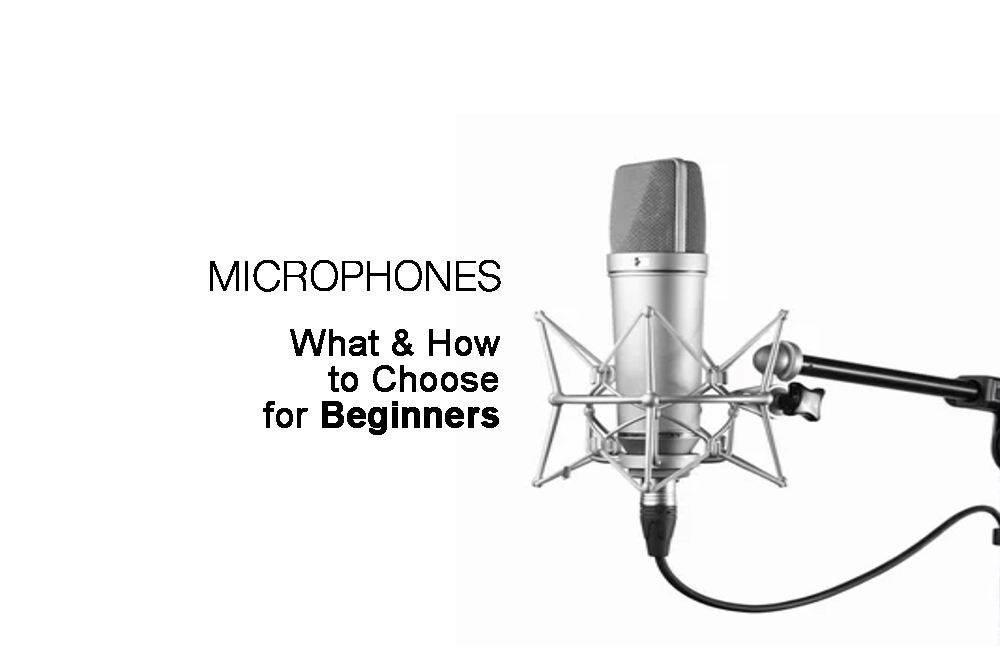
In the world of content creation, audio quality plays a big part. Your audience doesn’t necessarily have to watch your content, but they’ll need something to listen to. For that, you’ll need a microphone. But how do you go about choosing one?
Choosing the right microphone begins with knowing your purpose. There are many types of microphones, of which three are more commonly used for content creation, Dynamic, Ribbons, and Condenser microphones, with Condenser microphones being the preferred choice for most indoor uses.
Today we shall be looking into these types of microphones and their purposes.

Dynamic Microphones
This is the microphone with a cable that we’re all used to seeing growing up. It’s a standard piece of equipment in a school’s P.A. system, on television shows, and at concerts.
Due to their structure, Dynamic microphones are very robust and easy to work with. They do not require any external power source, and because they convert sound using a membrane and a magnetic coil, they can handle loud volumes without much distortion.
Though dynamic microphones are good at managing loud volumes, they’re not very sensitive to soft sounds. A lot more energy is required to vibrate the membrane, hence they’re not the best choice for most indoor uses, like podcast recording or picking up sound from an acoustic guitar.
- Good for: drumming recordings, recording sound output coming out of an amplifier, and outdoor live events.
- Price(s): average price from US$50 – US$1,000 (HKD$390 – HKD$7,850)
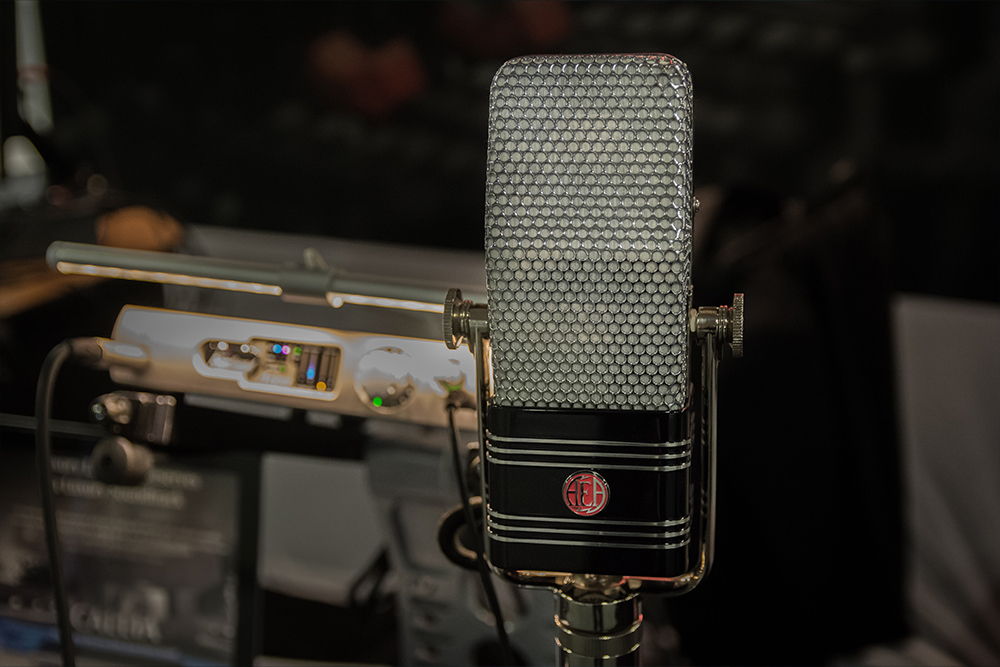 Photo by Steve Harvey
Photo by Steve Harvey
Ribbon Microphones
Technically speaking, ribbon microphones are considered a type of dynamic microphone. Including the former, their actual names are Dynamic Moving Coil Microphone and Dynamic Ribbon Microphones.
But since the name ‘moving coil’ can be a mouthful, the industry simply calls it dynamic mic, while calling the latter ribbon microphone, resulting in confusion about them being different types of microphones.
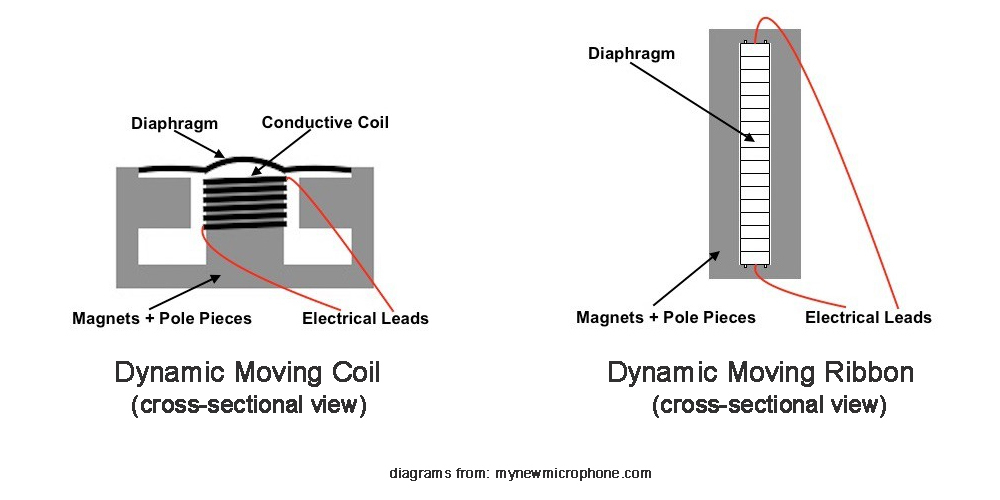
Though part of the same group, ribbon microphones are able to manage sound with better sensitivity thanks to their armature being a ribbon-like foil instead of the membrane and coil.
The main advantage of using a ribbon microphone is that it can capture the most natural sound because the ribbon is able to follow the movement of the sound waves more closely than a magnetic coil can.
Hence, whatever is being recorded by a ribbon microphone will sound a lot closer to the actual source.
- Good for: professional studio recordings, recording of ambient sound, and musical instruments without amplification, (avoid a loud or sudden outburst of sound directly into the mic)
- Price(s): average price from US$100 – US$6,000 (HKD$785 – HKD$48,000)
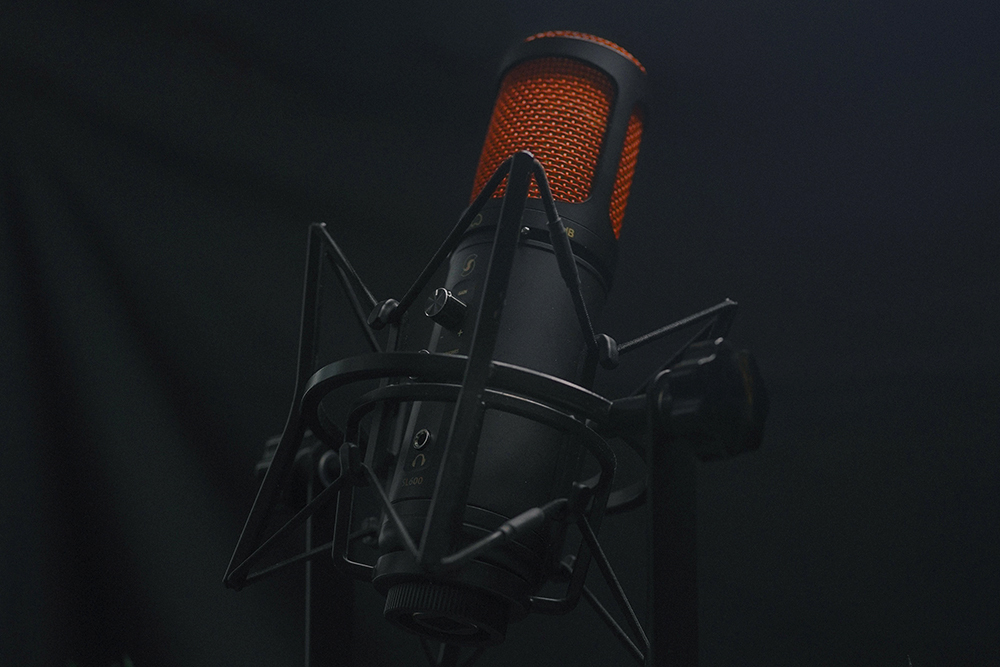 Photo by Editors Keys
Photo by Editors Keys
Condenser Microphones
Condenser microphones are by far the most versatile microphones for indoor uses, due to their responses to a wide range of frequencies. They also perform extremely well at picking up quick bursts of energy such as drum beats and guitar picking.
When considering a condenser microphone, you can look at two areas, namely the Large Diaphragm Condenser (avg. diaphragm > ⌀.75”), and the Small Diaphragm Condenser (avg. diaphragm < ⌀.75”).
Both large and small diaphragm microphones are good at picking up sounds due to their internal membrane moving with the sound waves, sending signals through an electrically conductive metal plate.
In cases of a large diaphragm condenser microphone, it is more suited for vocal-type recordings or when a bigger sound is needed.
As for a small diaphragm condenser microphone, it is more suited to recordings of detailed sounds. Because it has a smaller diaphragm, it's good for capturing delicate sounds from musical instruments such as woodwind, acoustic guitars, cymbals, and hi-hats.
However, do note that a condenser microphone does not produce a current of its own. Hence it’ll require phantom power for it to work.
Large Diaphragm Condenser
- Good for: vocals, situations where sound source needs to appear bigger
- Price(s): average price from US$15 – US$ 9,000 (HKD$118 – HKD$70,000)
Small Diaphragm Condenser
- Good for: instrumental recordings, recording of delicate sounds
- Price(s): average price from USD$30 – USD$6,000 (HKD$235 – HKD$47,000)
What’s the Best Microphone for Beginners
Based on what’s been discussed above, the best microphone would be defined as the one that suits your purpose best. Because sound is a subjective matter, you’ll have to rely a lot on your own experiment.
However…
To help you narrow down on the area in which to experiment, the type of microphone a beginner can consider would definitely be a condenser microphone.
For the most part, a condenser microphone is very versatile. Its functionality, as mentioned above, covers a wide range of scenarios from vocal (singing, podcast) recordings to instrumental recordings.
Unless you’re planning on recording outdoors, a condenser microphone will serve you well in almost any indoor situation.
Secondly, condenser microphones are relatively cheap these days. And there’s a whole lot of varieties you can choose from, for streaming or recording purposes.
Understanding the Frequency Response of Microphones
Every type of sound has its unique range of frequencies. A male voice generally is lower than a female voice. A Bass guitar is gonna be very different from a violin.
So by understanding what type of recordings you’ll be doing the most can better help you choose the right kind of microphones, that can pick up the intended range of frequencies.
For example, a frequency response range of around 80 Hz to 15 kHz is more suited for vocal recordings. Whereas for drums, you want something that is around 50 Hz.
Understanding the Polar Patterns of Microphones
Simply put, a polar pattern of a mic is its directional sensitivity in which it is designed to receive sound. The common polar patterns are bi-directional, omni-directional, cardioid, super-cardioid, and hyper-cardioid.
Polar patterns are important in situations where you want to record sounds from a specific
direction while avoiding sounds from all other directions.
For example, a singer would choose a cardioid mic that focuses on front reception (sound coming from the singer), while avoiding the sound from the band coming from other directions.

Do You Need a Pop Filter for Your Microphone?
Pop filters are important in situations where you’re recording vocals, be it for singing, talking (podcast), or a narrative session.
The general purpose of using a pop filter is to reduce the impact of any ‘unwanted air’ from your mouth hitting your mic. When buying a condenser microphone, many sellers now are bundling them in a package, which includes the microphone itself, a pop filter, and a stand.
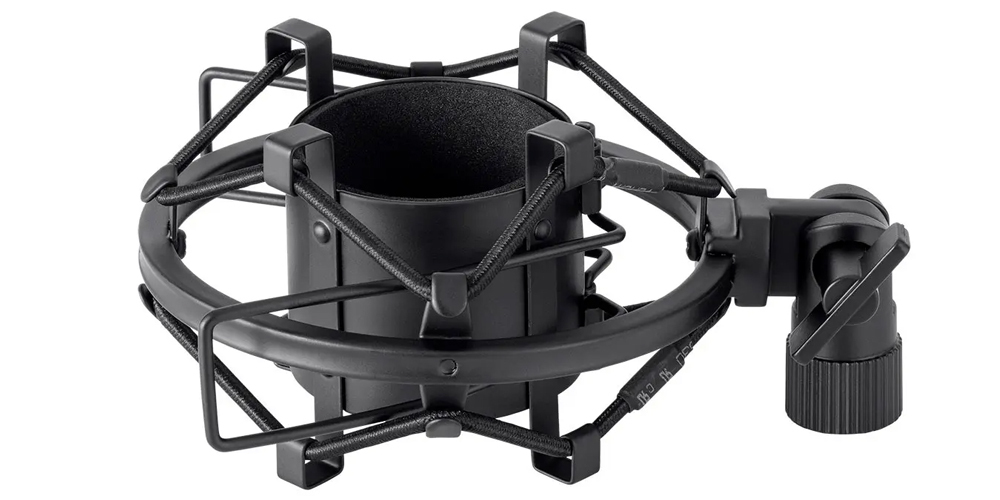
Do You Need a Microphone Stand?
Yes, and for two reasons.
The first obvious reason is, the last thing you want to o during a recording is to be holding onto your mic. Having a microphone stand/tripod will provide you with that hands-free comfort during every recording session.
The second reason is, you want to minimize as much as possible, any vibration from getting to the microphone other than your voice (or sound source). Elevating the microphone from a surface (for example a table) with a mic holder will help.
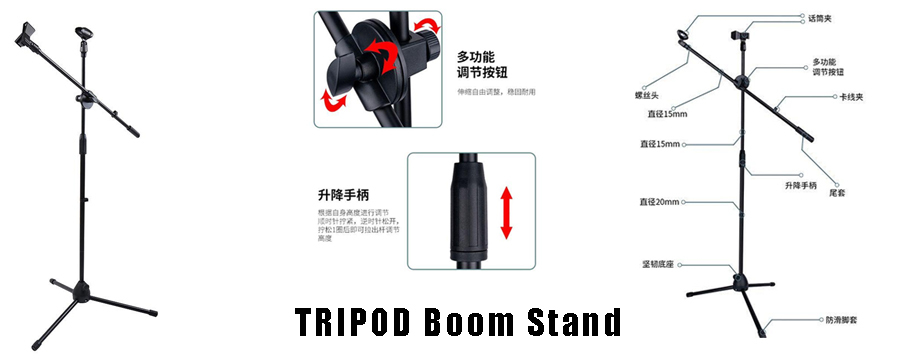
A more professional approach is to get a shock mount. A shock mount is basically a holder that can suspend your mic with elastic fixtures, hence making it even lesser prone to vibration.
In conclusion, sound is a very subjective thing. What sounds good to someone else may not sound good to you. There is no “one-size fits all” solution when it comes to choosing a microphone, but one thing is for sure, the higher price is not always better. So start experimenting.
Rock On lnnl,








